
Odoo is a powerful business management platform, and it can be even more powerful when integrated with other applications. This allows you to automate tasks, streamline your workflows, and get a more complete view of your business.
There are many different ways to integrate Odoo with other applications. One popular method is to use a workflow automation platform like Wiresk. Wiresk makes it easy to connect Odoo to any application that has an API, including CRM systems, marketing automation platforms, and accounting software.
It is important before using Odoo as a APP to get a connection to it.
Click on “Create a Connection”
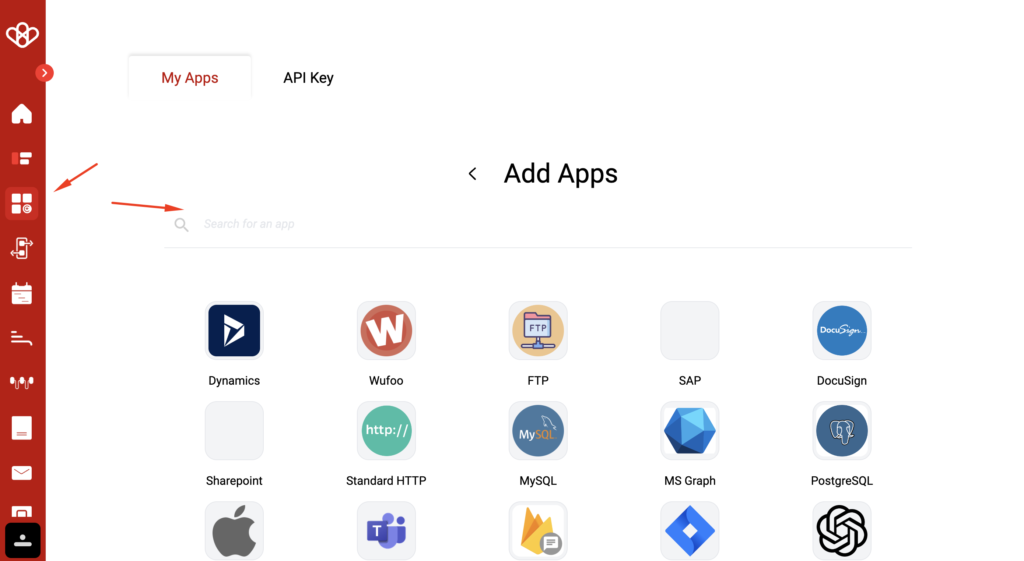
Select the Odoo platform
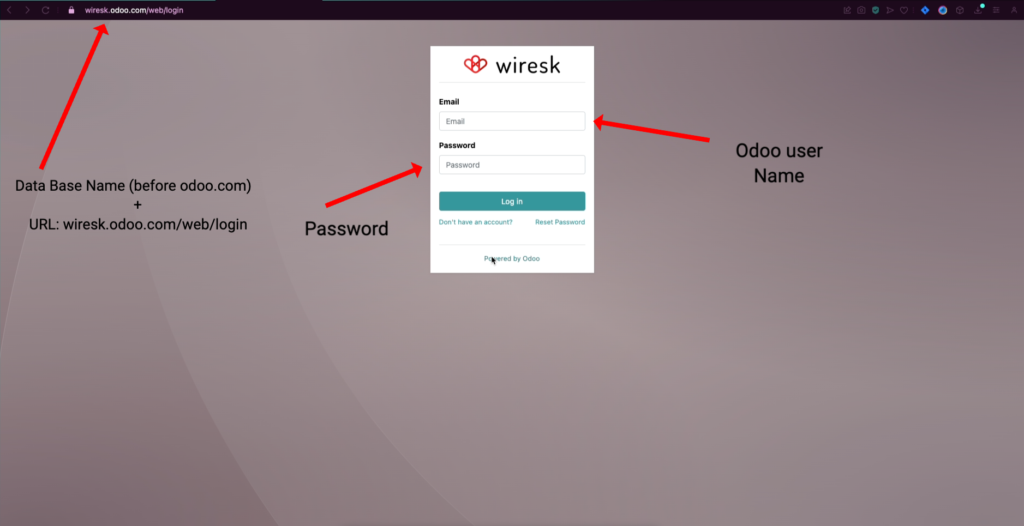
Here the information required for integrate Odoo to Wiresk
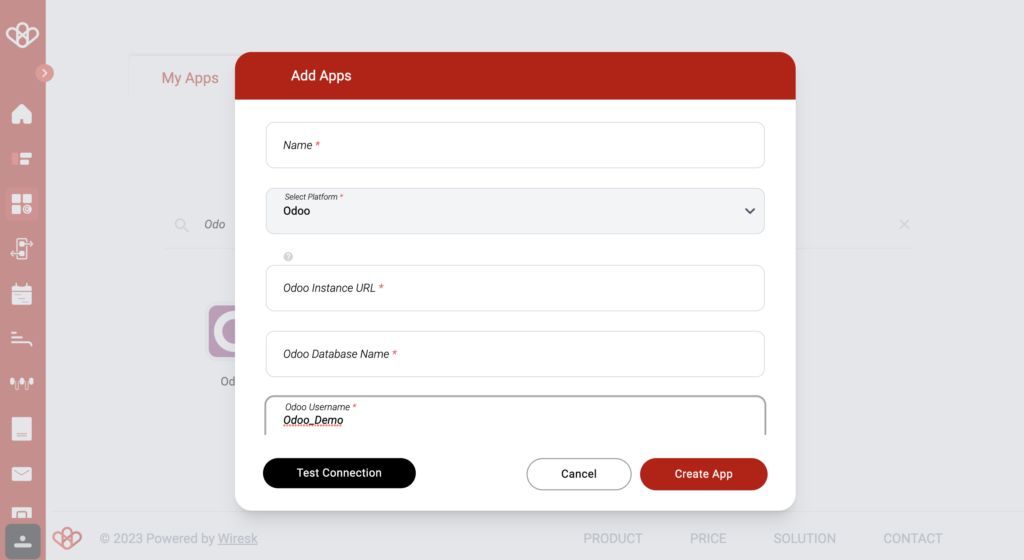
- Choose a name for your connection
- Enter the URL of your Odoo data base (the link of your Odoo Tenant (eg:https://name.odoo.com/)
- Enter your data base name (the name you write at the creation of your data base (eg:database_name))
- Enter your Odoo username (the email you use for login)
- Enter your password linked to your username
- Save it
Then go to Flow Tab and Click on Create Flow
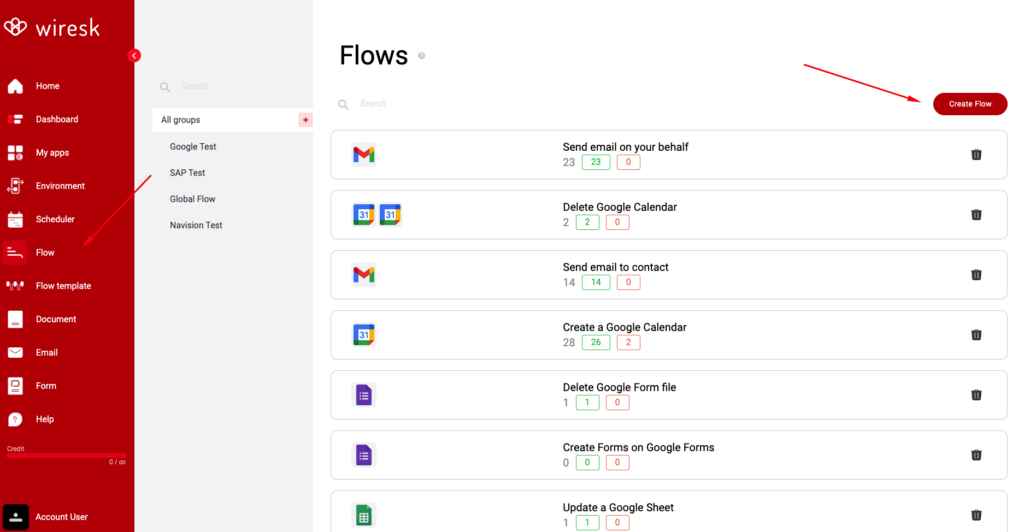
Define your Flow Name and assign to your Group
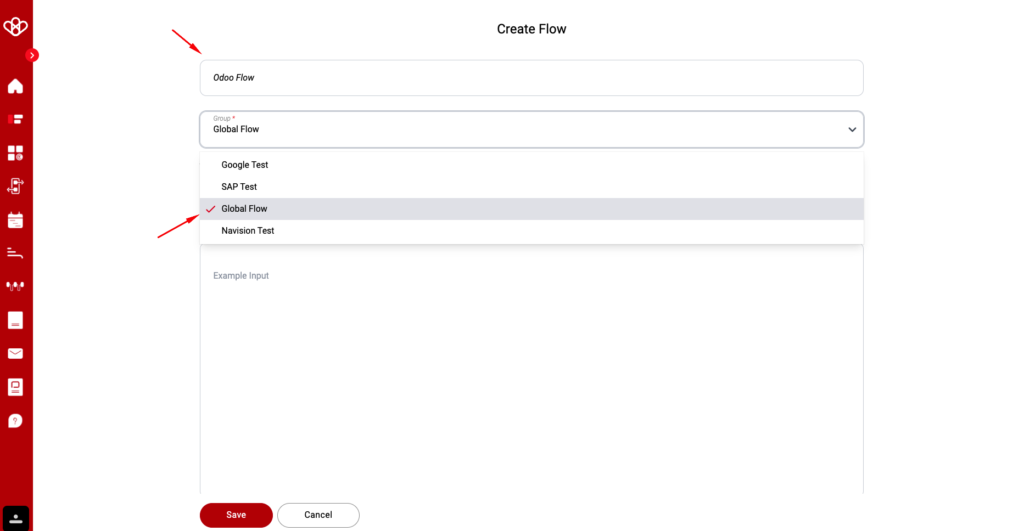
Select your Odoo
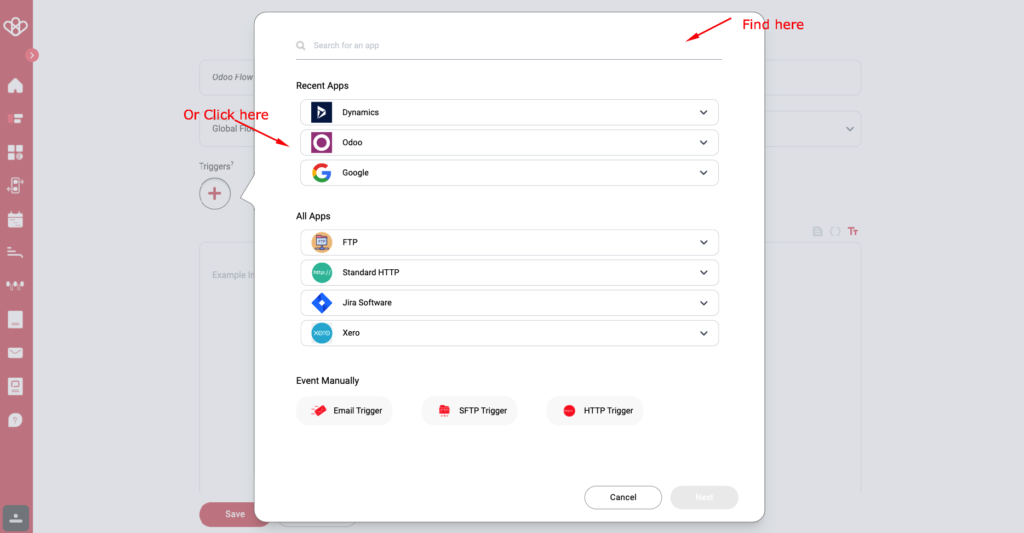
Select your triggers
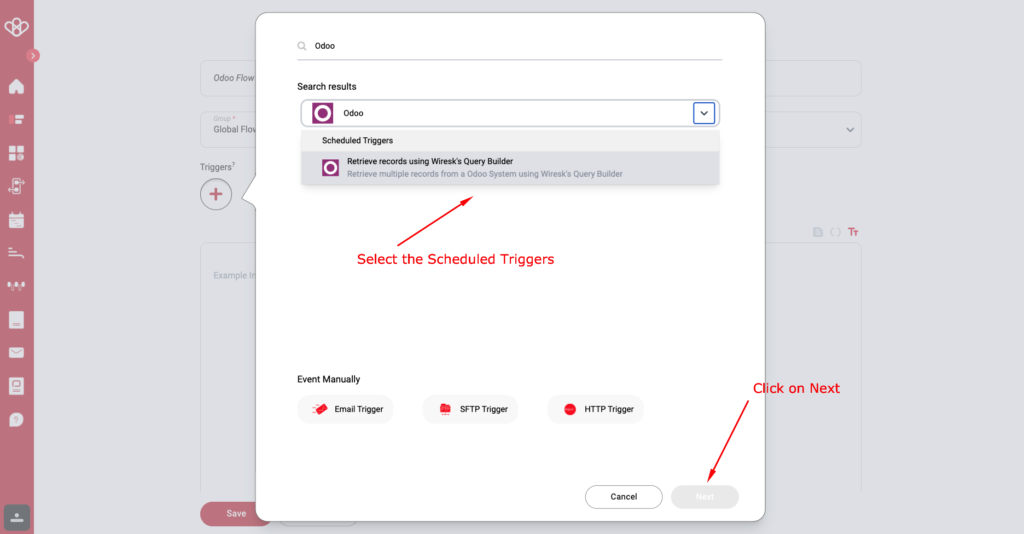
Then set up the triggers
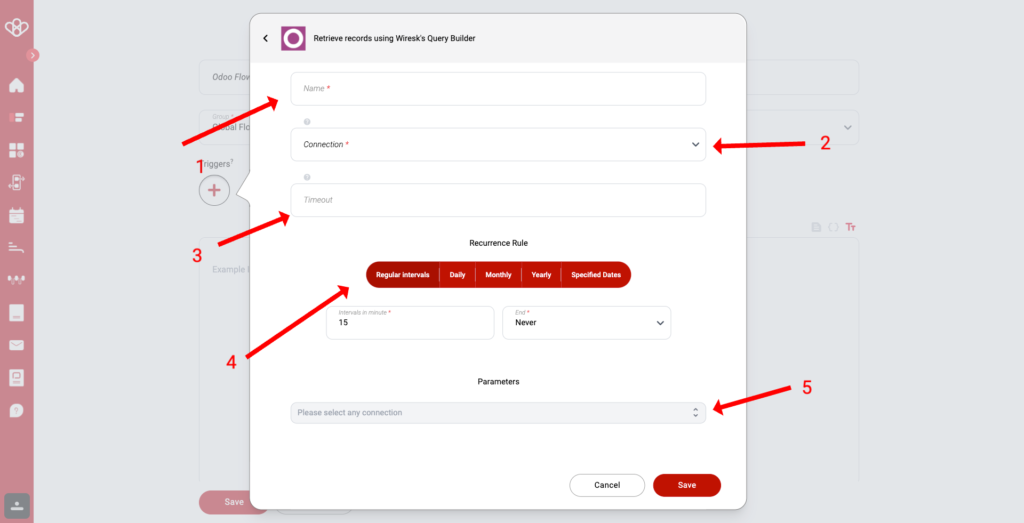
In Bold Mandatory Field
- Name of the Scheduler
- Select the Odoo Connection (The Connection we setup together, watch above)
- Define your timeout (is used to define when the scheduler restarts, and is useful on tasks with many requests, allowing the flow to be restarted without being blocked.)
- Then Schedule your reccurence rule (A recurrence rule for a scheduler is a set of rules that define how often a task should be repeated. It can be used to schedule tasks that need to be done on a regular basis, such as sending out a weekly newsletter or running a daily backup.)
- Frequency: How often the task should be repeated. This can be daily, weekly, monthly, or yearly.
- Interval: The number of times the frequency should occur before the task is repeated. For example, a weekly task with an interval of 2 would be repeated every other week.
- Start and end dates: The dates on which the task should start and end repeating.
- Than click on Parameters
- Parameters are used through your connection to access your Odoo database and inform our system of the different entities you have.
- Example: Odoo Data base -> Entities Contact -> Column Name Contact

Select Entity Contact
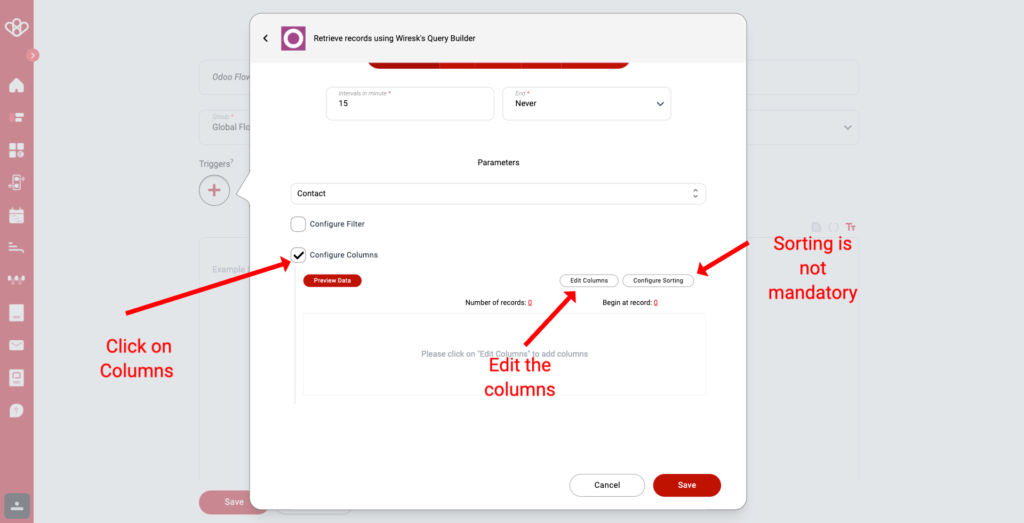
Edit Columns
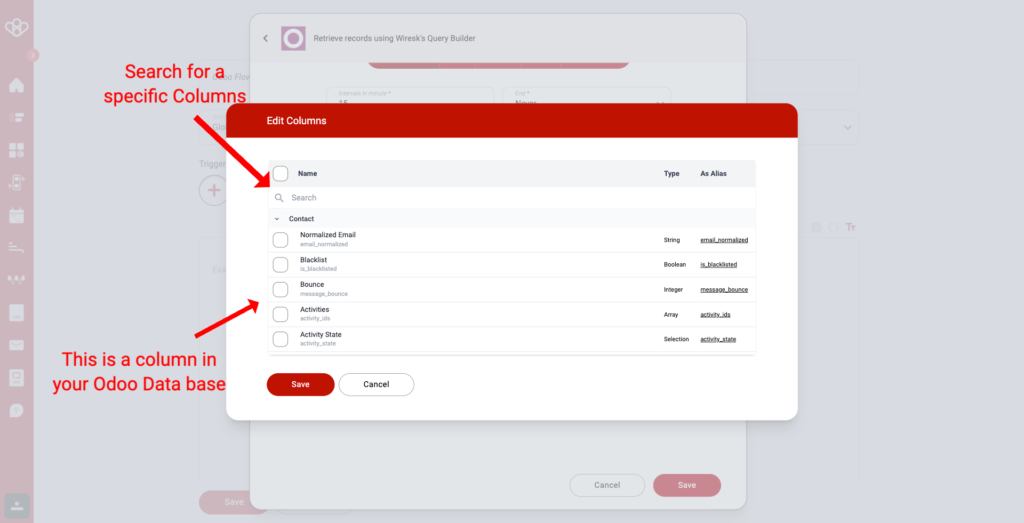
Search the Column “Name“
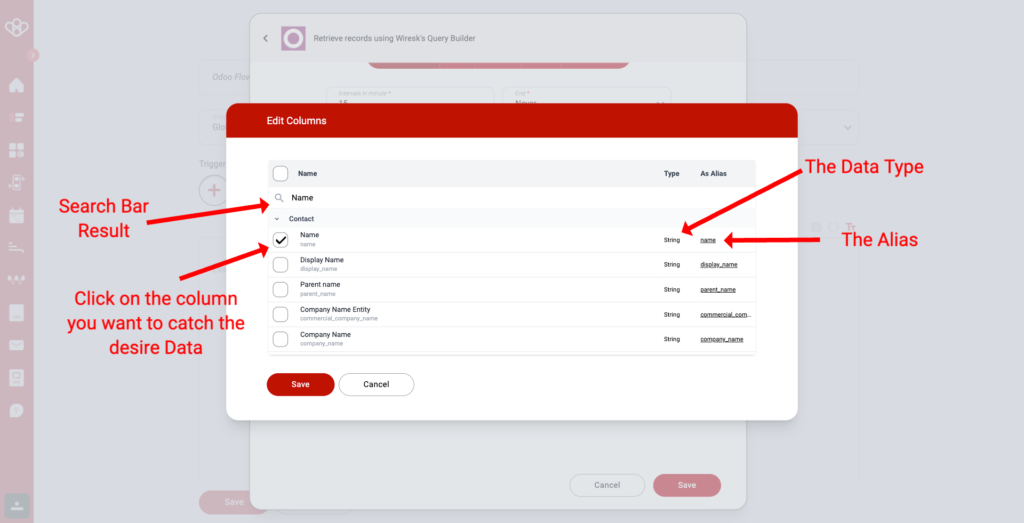
Example: I would like to know all my clients in Odoo CRM for send to my Power Bi or to send on another CRM
Click on Save
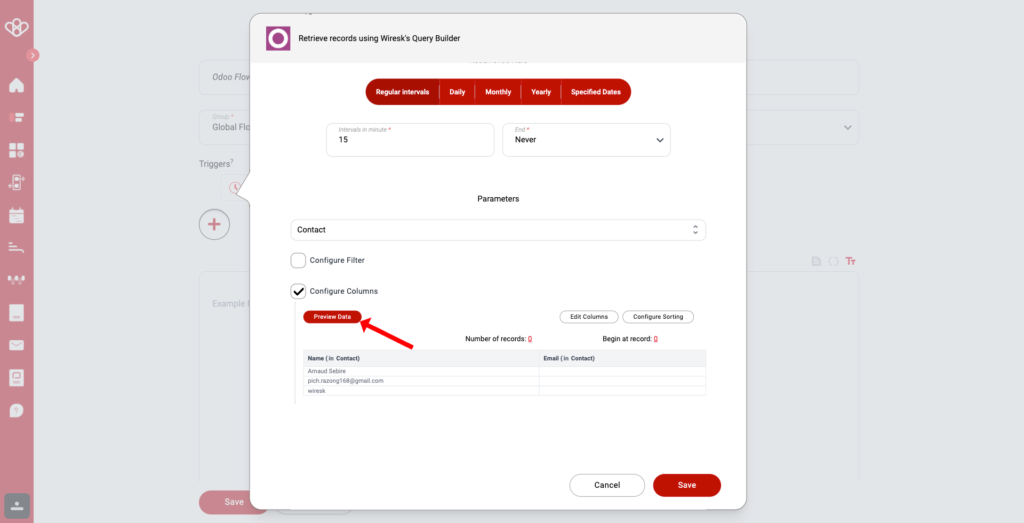
Click on Preview Data for display the Data Result
Click on Save
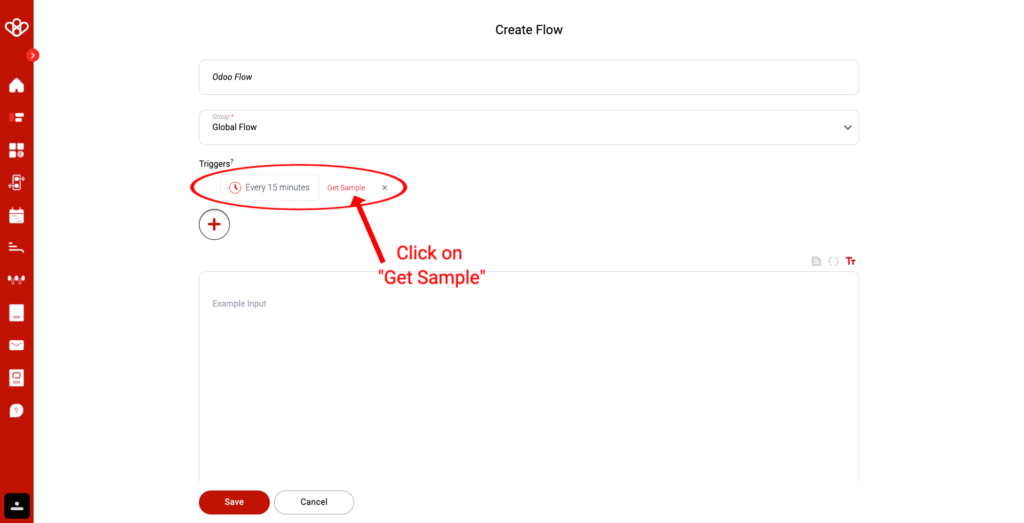
As you can see, your triggers is generated.
To make your mapping easier, click on “Get Sample”
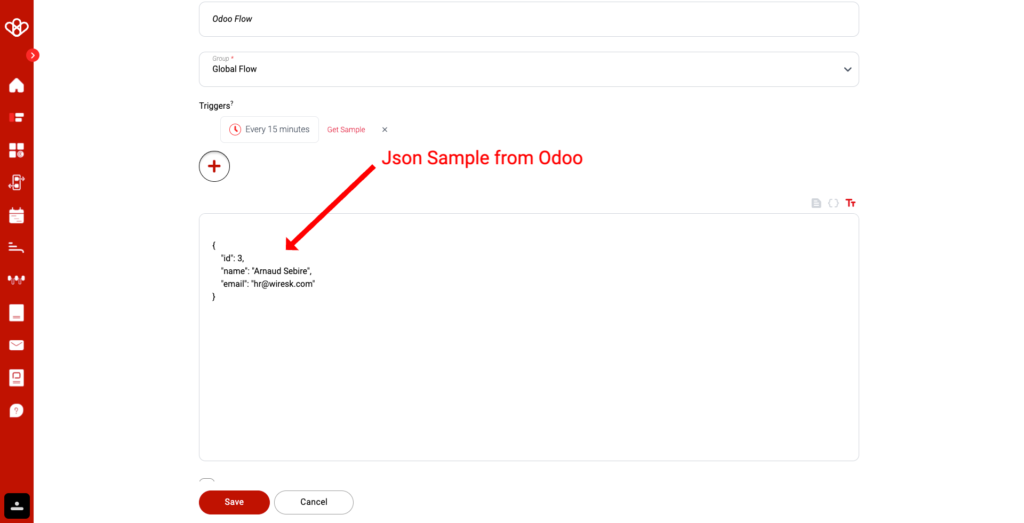
You’ll notice that a Json-type format is displayed with information such as “name” and “email”, this is the data we retrieved in the “Parameter” section. It will be used to map in a more simplified way (this step is not mandatory, but highly recommended).
Click on Save
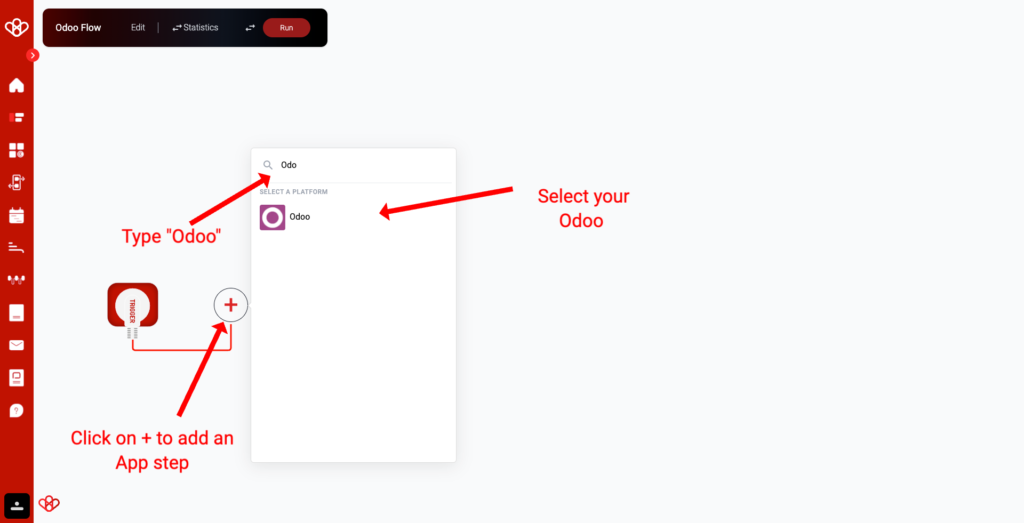
Follow the instruction
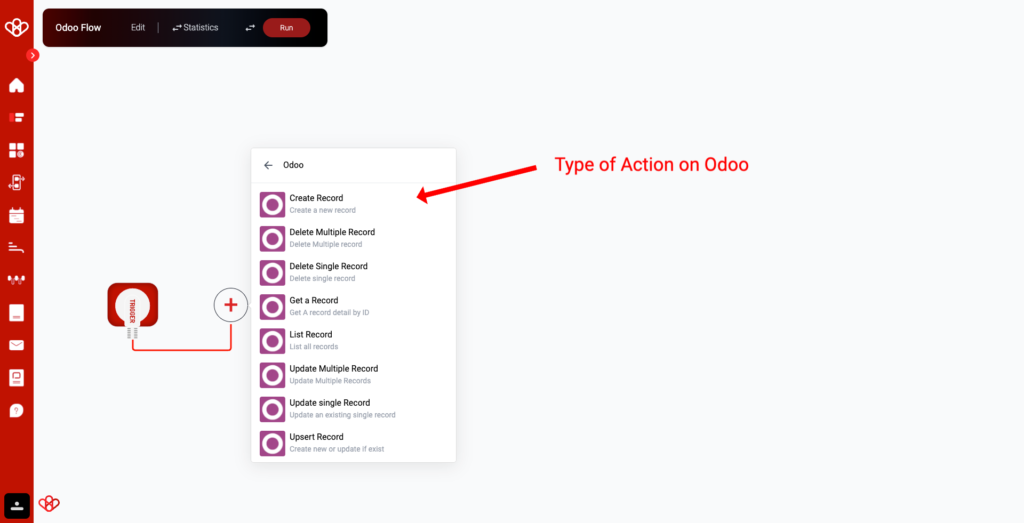
Select your action on Odoo
Little tip: Many beginners make the mistake between “Create” and “Upsert”. The Create function will always create a record, whereas the Upsert function will update a record if it already exists, and create a record if it doesn’t exist.
Pay close attention
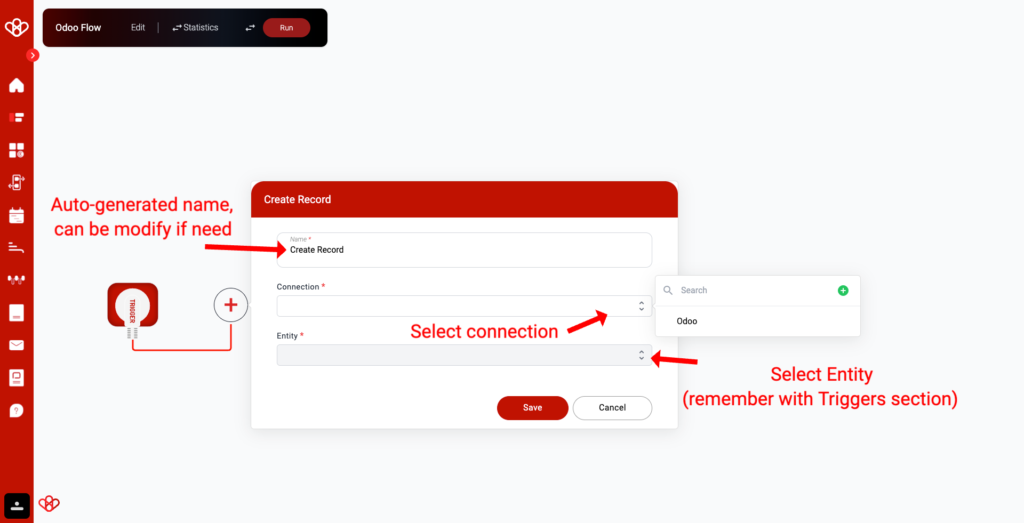
- Name your Step
- Select your Odoo Connection
- Select the Entity
- Wait loading (it can take max 30seconds, depend of the app selected)
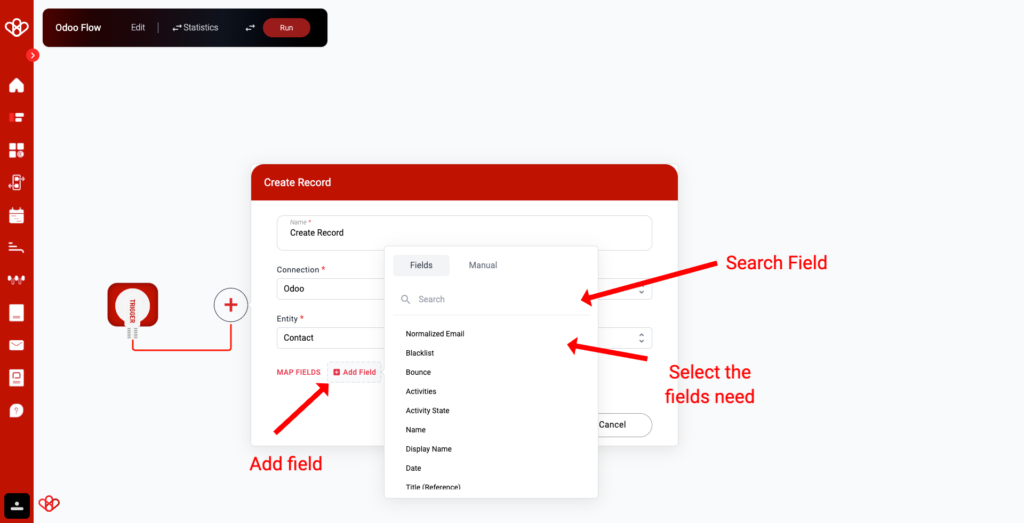
Let’s map the name field from the JSON input to the name_2 field of the third-party app.
This means that whenever the JSON input contains a name field, the value of that field will be copied to the name_2 field of the third-party app.
Here is an example:
// JSON input
{
“name”: “John Doe”
}
// Third-party app
{
“name_2”: “”
}
After mapping the name field, the third-party app will look like this:
// Third-party app
{
“name_2”: “John Doe”
}
Let’s do it for Odoo
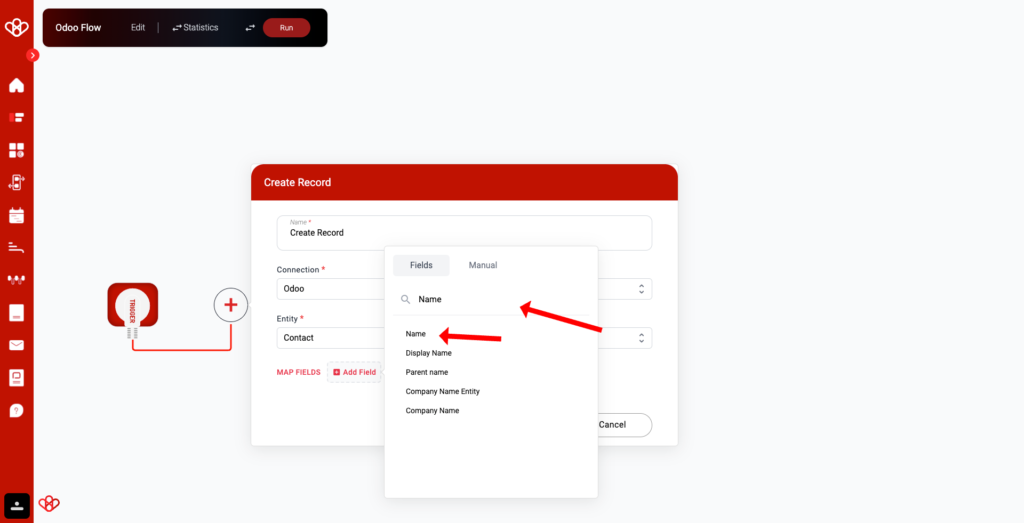
Search “Name” and Click on “Name”
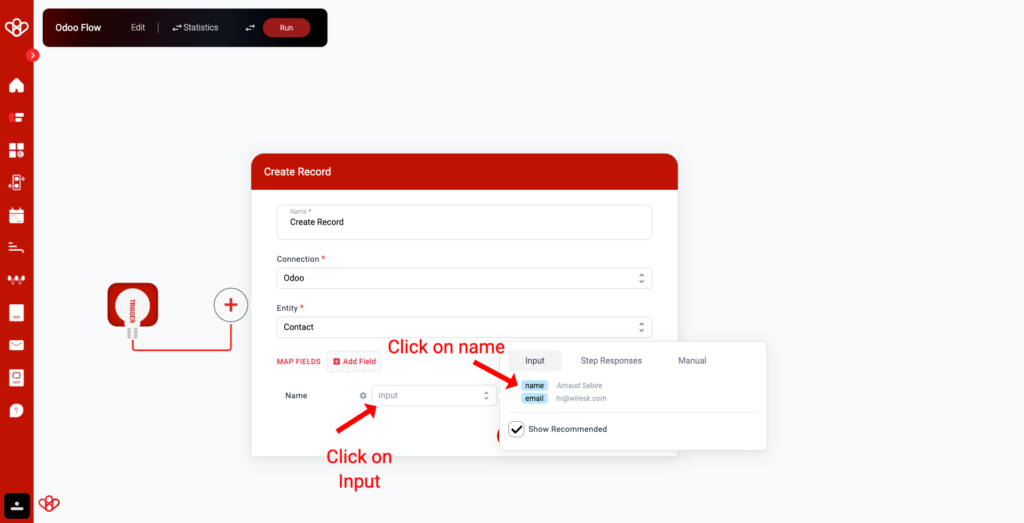
Then click on save or add new field
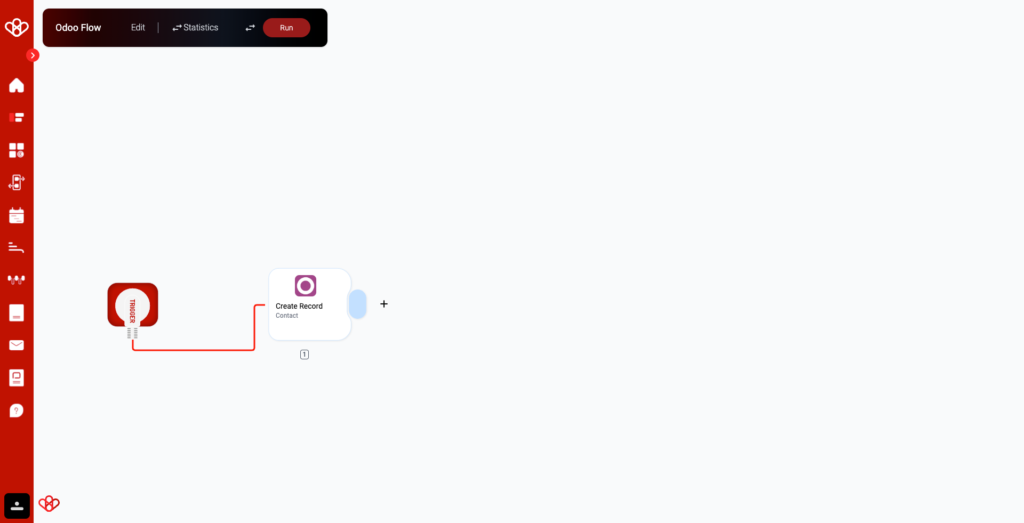
Congrats you make your first Odoo step, you can add another step with another app or you can run your flow by clicking on RUN
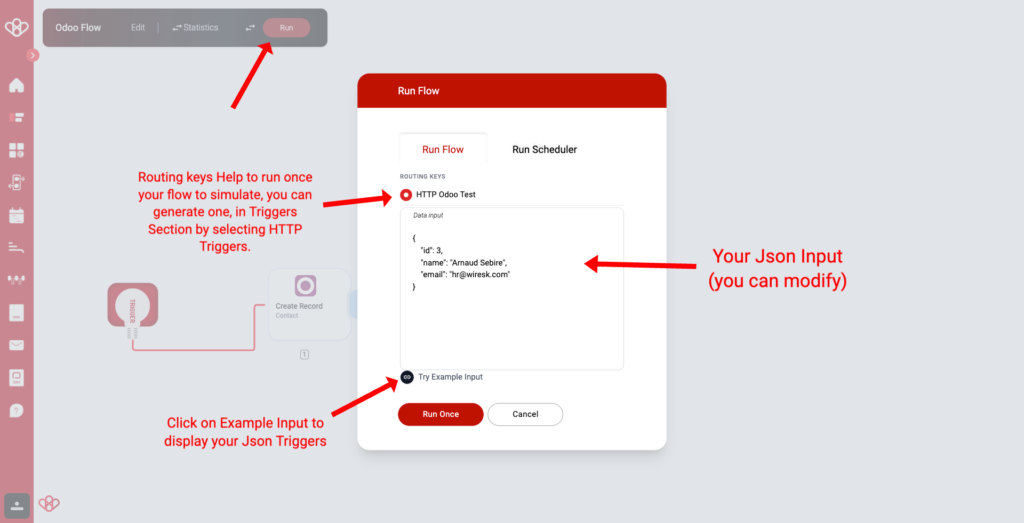
Click on Run, if you have a Routing Keys you can Run Once to help to simulate the flow one time.
Click on Run Once
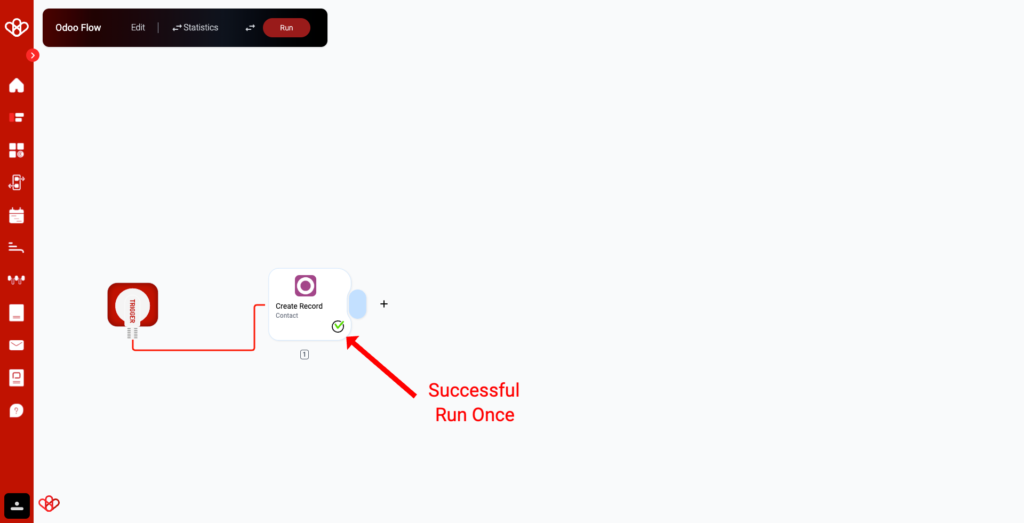
The green “v” means that the step has been successfully completed.
Click on it for more detail
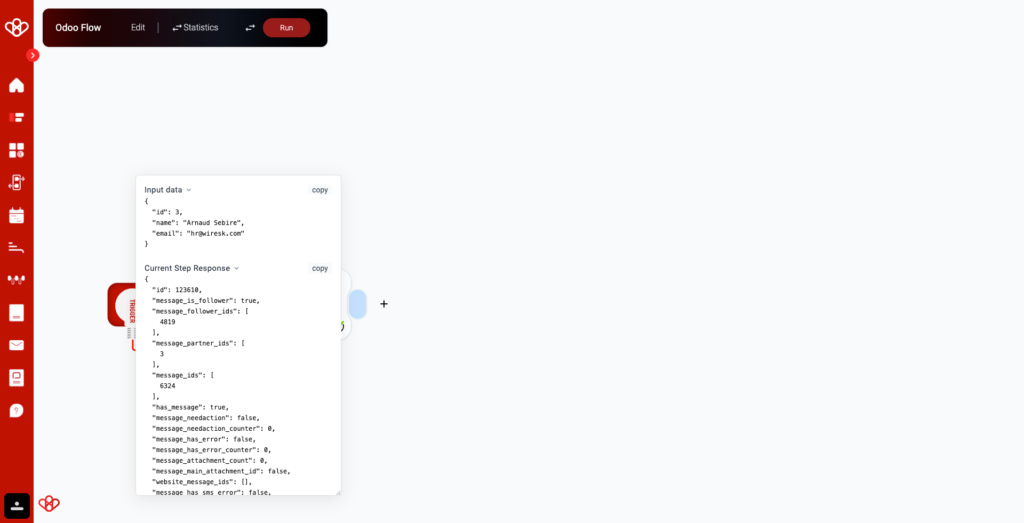
Here the detail of response from Odoo
You can Run Scheduler to execute the whole flows (useful to import somes Customer data base into another one, in one run)
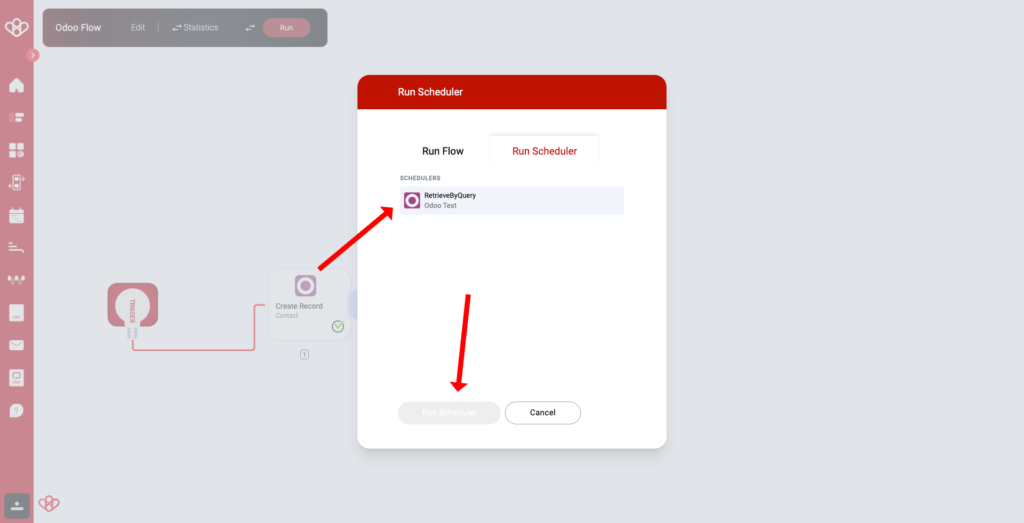
Select your Schedulers
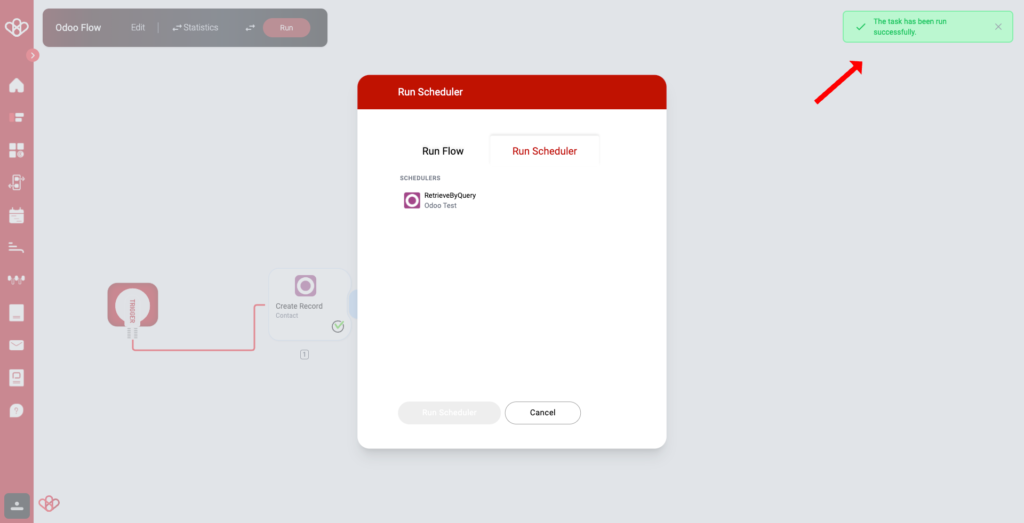
The Green Card mean Run Scheduler work perfectly
Congratulations, you’ve made an Odoo flow, now you can try out some more complete flows.
Don’t leave us now and take a look at the different use cases below that we’ve found that might be of interest to you.
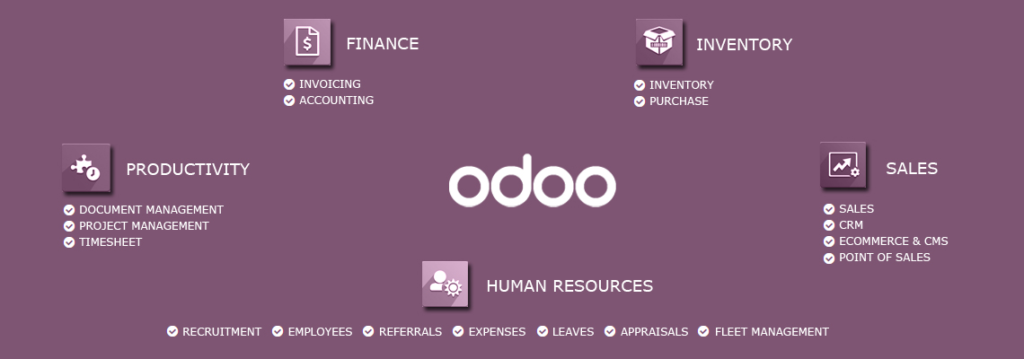
FUNCTION
The Odoo create, delete, get, list, update, and upsert record operations are part of the Odoo Object Relational Model (ORM), which is used to interact with Odoo data.
Create Record
The create record operation creates a new record in Odoo. It takes a dictionary of field values as input and returns the new record object.
Delete Multiple Records
The delete multiple records operation deletes a batch of records from Odoo. It takes a list of record IDs as input and returns the number of records deleted.
Delete Single Record
The delete single record operation deletes a single record from Odoo. It takes a record ID as input and returns the deleted record object.
Get a Record
The “get record” operation is used to fetch a single record from Odoo using its ID. It takes a record ID as input and returns the record object.
List Records
The list records operation allows you to effortlessly fetch all the records of a specific model from Odoo. It takes no input and returns a list of record objects.
Update Multiple Records
The multiple record update operation allows you to efficiently update a group of records. The function receives a list of record IDs and a dictionary of field values as input. It returns the number of records that were updated.
Update Single Record
The operation of updating a single record in Odoo is known as the “update single record” operation. It takes a record ID and a dictionary of field values as input and returns the updated record object.
Upsert Record
The upsert operation in Odoo creates a new record or updates an existing one. It takes a dictionary of field values as input and returns the new or updated record object.
Interacting with Odoo metadata
Wiresk applications can interact with metadata from Odoo records to generate reports, dashboards, and other forms of data visualization. The metadata of a record includes its ID, creation date, modification date, and any field values, including custom fields or custom applications.
By interacting with metadata for the create, delete, get, list, update, and upsert record operations, you can track how users are interacting with your Odoo application. This information can be used to improve the usability and performance of your application.
For example, you could use the metadata to identify the most frequently created, deleted, updated, and viewed records. You could also use the metadata to identify users who are having difficulty interacting with your application.
Additionally, by interacting with metadata, Wiresk applications can interact with any field of any table, even custom tables. This gives you the flexibility to track and analyze data in any way you need.
Here are some examples of how you could use Wiresk to interact with Odoo metadata:
- Generate a report of all the sales orders created in the past month.
- Create a dashboard that shows the number of active customers by country.
- Track changes to inventory levels over time.
- Identify users who have not logged into Odoo in the past 6 months.
- Monitor the performance of custom workflows.

Use case
Sales
- Create leads from emails: When you receive an email from a new customer, Wiresk can automatically create a lead in Odoo. This will help you to keep track of your sales pipeline and follow up with leads promptly.
- Send personalized emails to sales leads: Wiresk can help you to send personalized emails to sales leads based on their interests and needs. This can be a great way to nurture leads and move them further down the sales funnel.
- Track email opens and clicks: Wiresk can track which sales leads open your emails and click on links. This information can be used to prioritize your sales efforts and focus on the leads that are most engaged.
- Automatically add leads to Odoo CRM: When a sales lead opens a link in your email or replies to your message, Wiresk can automatically add them to your Odoo CRM system. This will help you to keep track of your leads and their interactions with your company.
Customer Service
- Create customer support tickets from emails: When you receive an email from a customer with a support issue, Wiresk can automatically create a ticket in Odoo. This will help you to track and resolve customer support issues efficiently.
- Assign tickets to the appropriate team members: Wiresk can automatically assign tickets to the appropriate team members based on the customer’s issue. This will help to ensure that tickets are resolved quickly and by the most qualified team members.
- Receive notifications when tickets are updated: Wiresk can send you notifications when customer support tickets are updated. This will help you to stay on top of customer support issues and ensure that they are resolved promptly.
- Close tickets when they are resolved: Wiresk can automatically close customer support tickets when they are resolved. This will help you to keep your Odoo CRM system organized and up-to-date.
Project Management
- Create project tasks from emails: When you receive an email with a new project task, Wiresk can automatically create a task in Odoo. This will help you to keep track of your project tasks and deadlines.
- Assign tasks to team members: Wiresk can automatically assign tasks to team members based on their skills and availability. This will help to ensure that tasks are completed on time and to a high standard.
- Receive notifications when tasks are completed: Wiresk can send you notifications when project tasks are completed. This will help you to stay on top of your project and ensure that it stays on schedule.
- Track project progress: Wiresk can track the progress of your projects and generate reports. This information can be used to identify areas for improvement and ensure that projects are completed on time and within budget.
Other Use Cases
- Automate email marketing campaigns: Wiresk can help you to automate your email marketing campaigns. This can be a great way to save time and reach a wider audience with your marketing messages.
- Send invoices and payment reminders: Wiresk can help you to send invoices and payment reminders to customers automatically. This can help to improve your cash flow and reduce the amount of time you spend on administrative tasks.
- Track website traffic: Wiresk can track website traffic and generate reports. This information can be used to improve your website’s performance and SEO ranking.
These are just a few examples of how Odoo integration can be used to perform common business tasks. By automating these tasks with Wiresk, businesses can save time and improve efficiency.
If you have any questions please contact us at contact@wiresk.com
